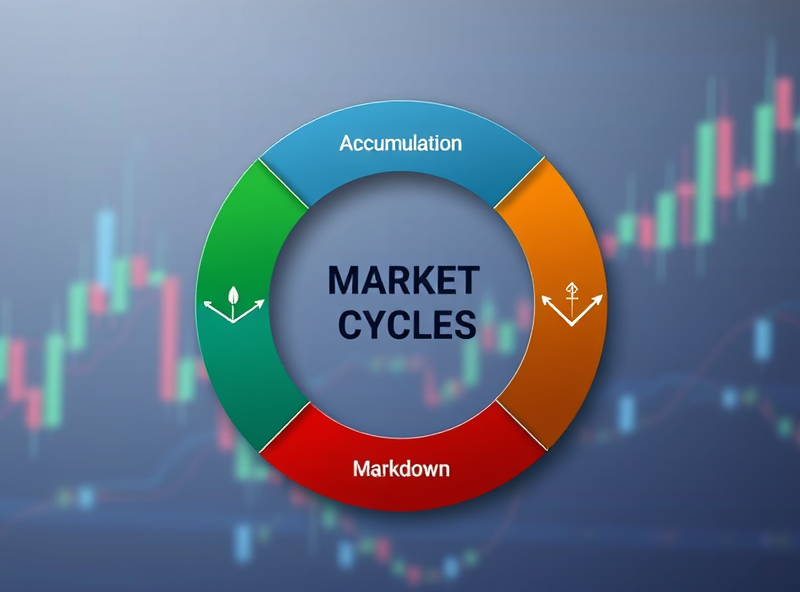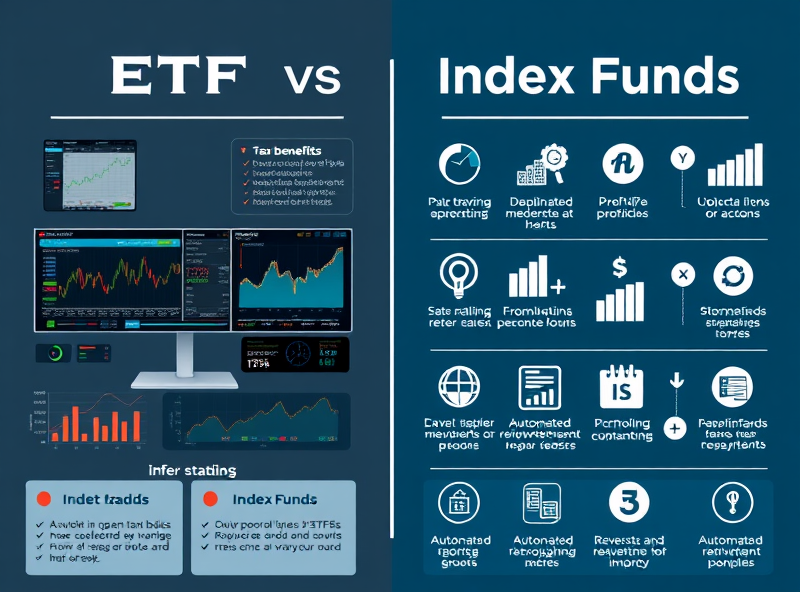
Understanding Market Cycles: Phases and Investment Strategies to Maximize Returns
The Four Phases of Market Cycles

Understanding market cycles is essential for anyone looking to make informed investment decisions. Market cycles are recurring patterns in the financial markets that reflect the broader economic environment. These cycles are divided into four key phases: accumulation, markup, distribution, and markdown. Each phase presents unique opportunities and challenges for investors.
1. **Accumulation Phase**: This phase occurs after a market downturn when prices are low, and investor sentiment is pessimistic. Savvy investors begin to buy undervalued assets, anticipating future growth. This is a great time to focus on long-term investments and identify assets with strong fundamentals.
2. **Markup Phase**: During this phase, the market begins to recover, and prices start to rise. Optimism returns, and more investors enter the market. This is a good time to ride the upward trend, but it’s also important to monitor valuations to avoid overpaying for assets.
3. **Distribution Phase**: In this phase, the market reaches its peak, and prices are at their highest. Investor sentiment is overly optimistic, and many new investors are drawn in. Experienced investors often start selling their holdings to lock in profits. This is a time to exercise caution and avoid getting caught up in the hype.
4. **Markdown Phase**: The final phase occurs when the market begins to decline. Prices drop, and fear dominates the market. While this can be a challenging time, it also presents opportunities to identify undervalued assets for the next accumulation phase. Staying calm and sticking to a long-term strategy is key during this period.
By understanding these four phases, you can better navigate the market and align your investment strategies with the current cycle. Remember, the key to success is patience, discipline, and a clear understanding of market dynamics.
Investment Strategies for Market Expansion

Market expansion is an exciting phase of the market cycle, often characterized by growing consumer demand, increased corporate profits, and a general sense of optimism in the economy. For investors, this phase presents unique opportunities to maximize returns, but it also requires a strategic approach to ensure long-term success.
Here are some key investment strategies to consider during a market expansion:
1. **Diversify Your Portfolio**: During market expansion, different sectors and industries often experience growth at varying rates. Diversifying your investments across multiple sectors, such as technology, healthcare, and consumer goods, can help you capture growth opportunities while minimizing risk.
2. **Focus on Growth Stocks**: Companies that are rapidly expanding their revenues and market share tend to perform well during this phase. Look for businesses with strong fundamentals, innovative products, and a clear competitive advantage.
3. **Invest in Cyclical Industries**: Sectors like construction, automotive, and travel often thrive during market expansion as consumer spending increases. Consider allocating a portion of your portfolio to these industries to benefit from the economic upswing.
4. **Stay Updated on Economic Indicators**: Keep an eye on key metrics such as GDP growth, employment rates, and consumer confidence. These indicators can provide valuable insights into the health of the economy and help you make informed investment decisions.
5. **Maintain a Long-Term Perspective**: While market expansion can be lucrative, it’s important to avoid getting caught up in short-term market trends. Stick to your investment plan and focus on achieving your long-term financial goals.
By implementing these strategies, you can make the most of the opportunities presented during a market expansion and set yourself up for financial success. Remember, the key to successful investing is staying informed, being patient, and making decisions based on thorough research.
Preparing for Market Contractions with Defensive Investments

Market contractions, or downturns, are an inevitable part of the economic cycle. While they can be unsettling, preparing for them with defensive investment strategies can help safeguard your portfolio and provide stability during uncertain times. Defensive investments are assets that tend to perform well or maintain their value even when the broader market is struggling. These include sectors like utilities, healthcare, and consumer staples, as they provide essential goods and services that people rely on regardless of economic conditions.
Additionally, diversifying your portfolio with bonds, particularly government or high-quality corporate bonds, can offer a reliable income stream and reduce overall risk. Cash reserves are another crucial component, as they provide liquidity and allow you to take advantage of opportunities when asset prices are low.
Finally, consider dividend-paying stocks from well-established companies with a history of consistent payouts. These can provide a steady income even during market volatility. By adopting a defensive investment approach, you can weather market contractions with greater confidence and potentially emerge stronger when the economy recovers.
Sector Diversification and Tactical Asset Allocation

When it comes to building a resilient investment portfolio, sector diversification and tactical asset allocation are two key strategies that can help you navigate market cycles effectively. Sector diversification involves spreading your investments across various industries, such as technology, healthcare, energy, and consumer goods. This approach reduces the risk of being overly exposed to a single sector, especially during periods of economic downturns or sector-specific challenges. For example, if the technology sector faces a temporary decline, your investments in other sectors like healthcare or utilities can help balance your portfolio and minimize losses.
Tactical asset allocation, on the other hand, is a more dynamic strategy. It involves adjusting your portfolio’s asset mix based on market conditions, economic trends, or your financial goals. For instance, during a market expansion phase, you might allocate more funds to growth-oriented sectors like technology or consumer discretionary. Conversely, during a contraction phase, you might shift towards defensive sectors like healthcare or utilities, which tend to perform better in uncertain times. By combining these two strategies, you can create a balanced portfolio that not only mitigates risks but also maximizes potential returns over time.
Remember, the key to successful investing lies in staying informed and regularly reviewing your portfolio. Diversification and tactical adjustments require ongoing monitoring and sometimes professional advice, but they are powerful tools to help you achieve long-term financial success.




